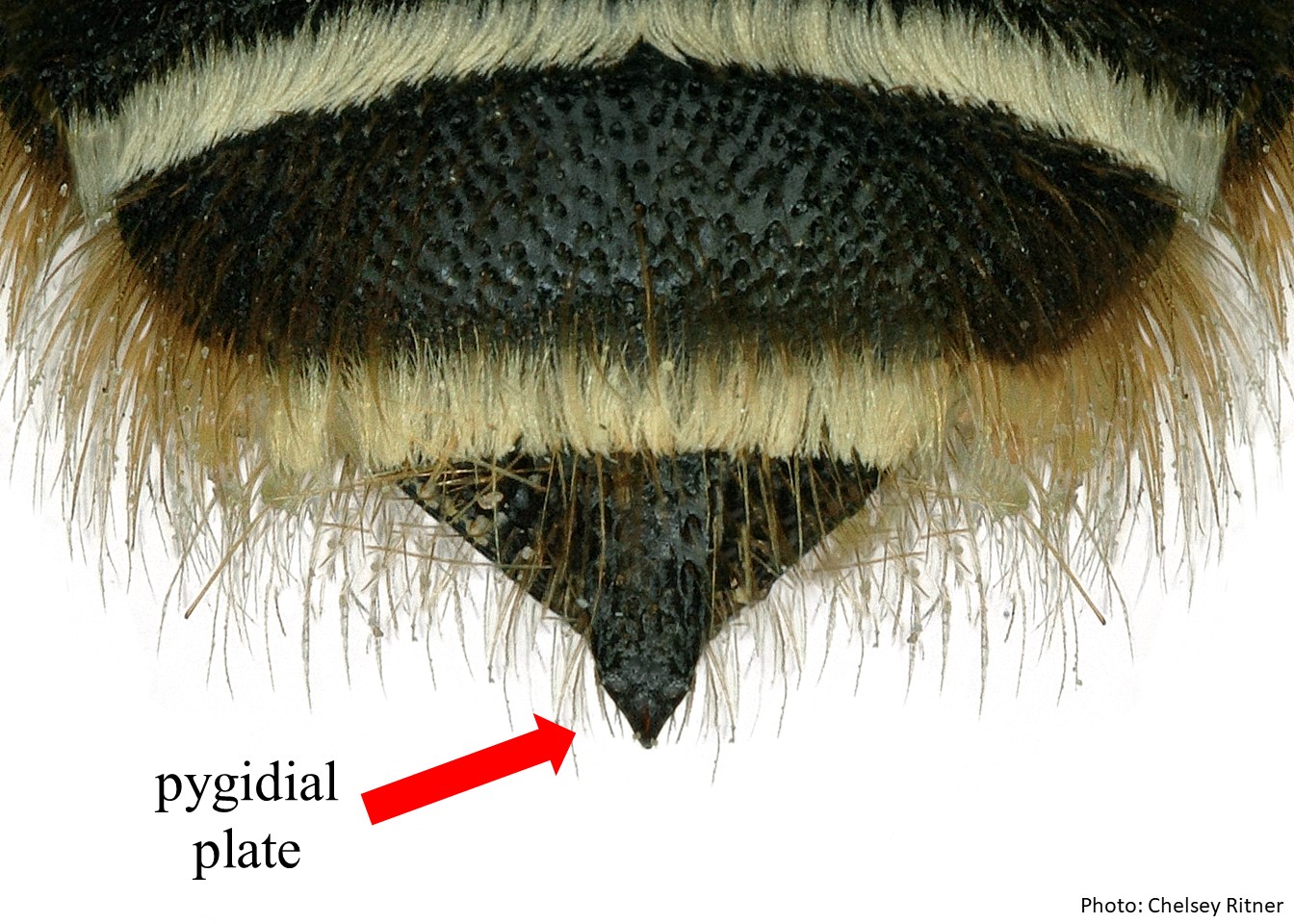Family: Apidae
Subfamily: Xylocopinae
Tribe: Xylocopini
Genus: Xylocopa
Subgenus: Bomboixylocopa, Maa 1939
Common name: Carpenter bee
Xylocopa (Bomboixylocopa) are medium to large sized bees, 15 – 30 mm in length, with females usually larger than the males. They have black integumentintegument:
a tough, protective outer layer
and thick pubescencepubescence:
short, fine hair
that varies in color from species to species. They often have two or more colors of hair on their bodies, with the hair on the metasomametasoma:
the posterior part of the body
and legs usually being pale. Their wings are yellow to brown and may have a violet iridescent color in bright light (Hurd and Moure 1963Hurd and Moure 1963:
Hurd, P.D. and J.S. Moure. 1963. A Classification of the Large Carpenter Bees (Xylocopine) (Hymenoptera: Apoidea). University of California Publications in Entomology (Vol. 29). Berkeley and Los Angeles: University of California Press, 365 pp.).
Xylocopa (Bomboixylocopa) contains 5 species (Hurd and Moure 1963Hurd and Moure 1963:
Hurd, P.D. and J.S. Moure. 1963. A Classification of the Large Carpenter Bees (Xylocopine) (Hymenoptera: Apoidea). University of California Publications in Entomology (Vol. 29). Berkeley and Los Angeles: University of California Press, 365 pp.).
Xylocopa (Bomboixylocopa) is known from China and Taiwan (Michener 2007Michener 2007:
Michener, C.D. 2007. The Bees of the World (2nd ed.). Johns Hopkins University Press, Baltimore and London, 953 pp.).

Distribution map generated by Discover Life -- click on map for details, credits, and terms of use.
Not much is known about the floral associations of Xylocopa (Bomboixylocopa) but most members of the genus Xylocopa are generalist pollinators.
(modified from Hurd and Moure 1963Hurd and Moure 1963:
Hurd, P.D. and J.S. Moure. 1963. A Classification of the Large Carpenter Bees (Xylocopine) (Hymenoptera: Apoidea). University of California Publications in Entomology (Vol. 29). Berkeley and Los Angeles: University of California Press, 365 pp.)
 short.
short. long.
long. without subapicalsubapical:
without subapicalsubapical:This subgenus is the most similar to Xylocopa (Nyctomelitta). Females can be differentiated by their long malar spacemalar space:
the shortest distance between the base of the mandible and the margin of the compound eye
 and the absence of subapicalsubapical:
and the absence of subapicalsubapical:
located just behind the apex of the segment or body part
laterallateral:
relating, pertaining, or attached to the side
spines next to the pygidial platepygidial plate:
unusually flat area (a plate) surrounded by a ridge or line and sometimes sticking well off of the end of the bee; if present, found on the sixth upper abdominal segment in females, seventh in males . Males can be differentiated by their smaller ocelliocelli:
. Males can be differentiated by their smaller ocelliocelli:
simple light reception organs; bees have three of them at the top of their head and the simple basitibial platebasitibial plate:
a small plate at the base of the hind tibia, like a kneecap (Hurd and Moure 1963Hurd and Moure 1963:
Hurd, P.D. and J.S. Moure. 1963. A Classification of the Large Carpenter Bees (Xylocopine) (Hymenoptera: Apoidea). University of California Publications in Entomology (Vol. 29). Berkeley and Los Angeles: University of California Press, 365 pp.).
The nesting behavior of most species in this subgenus are unknown (Hurd and Moure 1963Hurd and Moure 1963:
Hurd, P.D. and J.S. Moure. 1963. A Classification of the Large Carpenter Bees (Xylocopine) (Hymenoptera: Apoidea). University of California Publications in Entomology (Vol. 29). Berkeley and Los Angeles: University of California Press, 365 pp.). The species Xylocopa (Bomboixylocopa) rufipes has been observed to nest in soft cedars, including the trusses of houses, woodsheds, and firewood piles (He et al. 2017He et al. 2017:
He, C. L., C.D. Zhu, Y.R. Wu. 2017. Morphology and nesting behavior of Xylocopa rufipes (Hymenoptera: Apidae). Acta Entomologica Sinica 60 (9): 1074-1082.).
There are no known invasives.
He, C. L., C.D. Zhu, Y.R. Wu. 2017. Morphology and nesting behavior of Xylocopa rufipes (Hymenoptera: Apidae). Acta Entomologica Sinica 60 (9): 1074-1082.
Hurd, P.D. and J.S. Moure. 1963. A Classification of the Large Carpenter Bees (Xylocopine) (Hymenoptera: Apoidea). University of California Publications in Entomology (Vol. 29). Berkeley and Los Angeles: University of California Press, 365 pp.
Keasar, T. 2010. Large Carpenter Bees as Agricultural Pollinators. Psyche doi:10.1155/2010/927463.
Michener, C.D. 2007. The Bees of the World (2nd ed.). Johns Hopkins University Press, Baltimore and London, 953 pp.